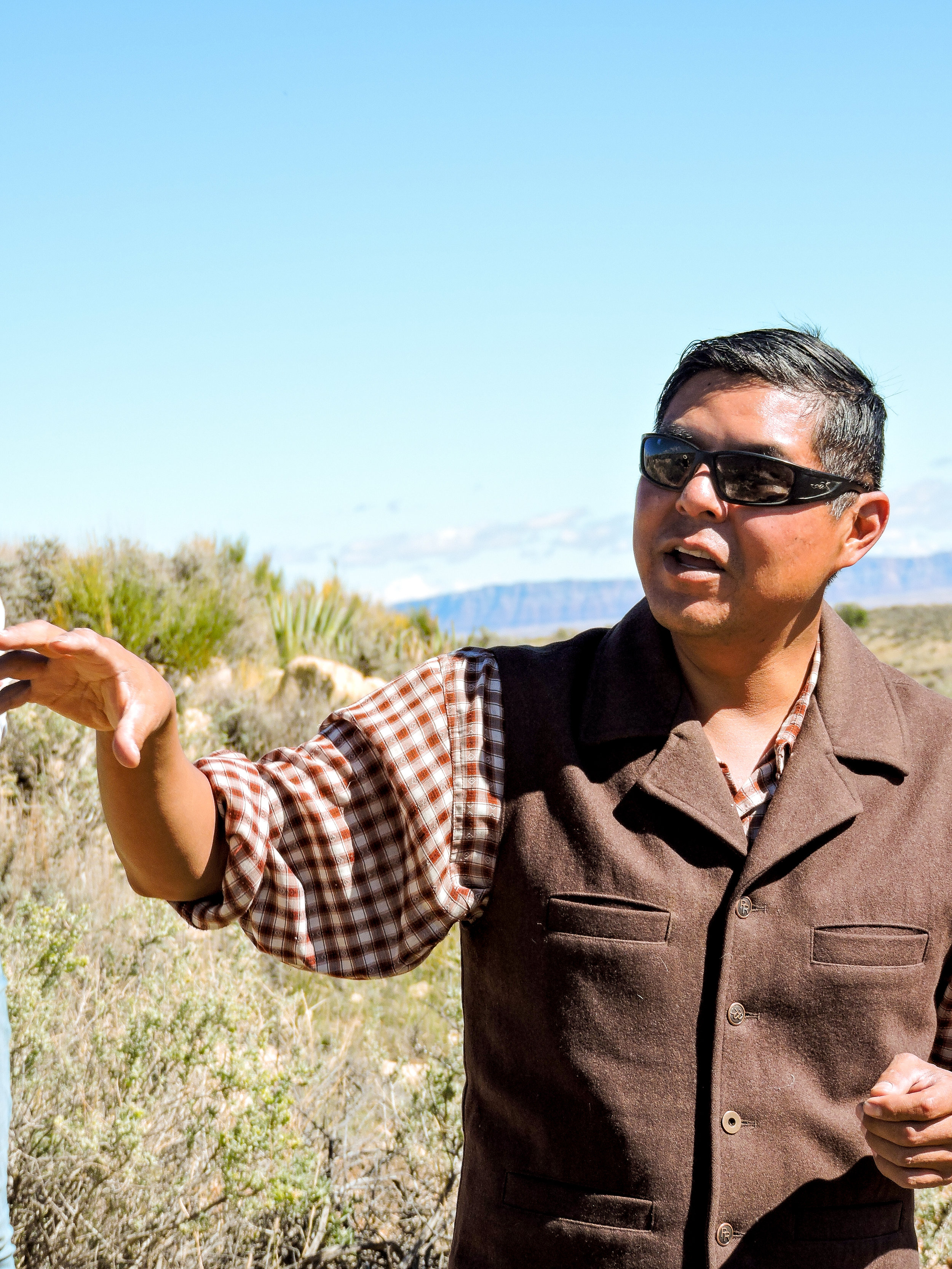Adrian Herder
Teacher
Pinon, AZ
Dan Herder
Rancher
Hardrock, AZ
10/14/18
We sat huddled around a small fire on the Black Mesa Reservation with multiple generations of the Herder family. A delighted smile flashed across Adrian Herder’s face as he narrated ghost stories in the last bit of the day’s light. At twenty-six years old, Adrian is full of enthusiasm and is eager to share stories and the history and heartache of the Navajo land. Continuing in his family’s footsteps, he is a dedicated activist and originally connected with the Semester in the West program through contacts he made at an environmental conference held by the Grand Canyon Trust in 2014. Like many young people on the reservation, Adrian left to pursue his education at Northern Arizona University but, unlike most, he was able to find a job back home coaching cross country and teaching art at the small high school in Pinon, thereby avoiding the all too common migration from reservation to city in search of work.
In our few days on the Navajo Reservation with the Herder family, we were welcomed with a rare openness and warmth. As we introduced ourselves, the Herders asked us why we were there and what we wanted to gain from our experience. In resounding unity, we answered, “to listen.” Adrian’s grandfather, Dan, told us that the animals used to lead them to the water sources, but now, due to the repercussions of the coal plant on the reservation and the rising impacts of climate change (the southwest being at the forefront of it), the soil has become dry and barren, almost uninhabitable. A sense of urgency and heartache emanated from each member of the Herder family as they spoke to us about how Peabody Coal has impacted their home and Black Mesa. “Our pristine aquifers have been sucked dry,” Dan explained. The only spring that flows near the Herder residence now is beneath a large rock canyon, and according to Dan, “It’s barely enough water to wet your hands and knees as you crawl through the rock wall tunnel.”
The next day, Adrian led us to a site where we helped lift rocks and move fallen trees to create gabions: small dams used for erosion control. The Herders work vigilantly to divert rainwater, slow erosion, and create nutrient rich soil for vegetation growth. We listened, and the concerns were heard loud and clear. What will this land look like with the absence of water? What will it mean for the livestock, wildlife, and residents of Black Mesa, all of whom depend on water as a vital, life sustaining resource.
By Lauren Ewell
Photo by Jessie Brandt







